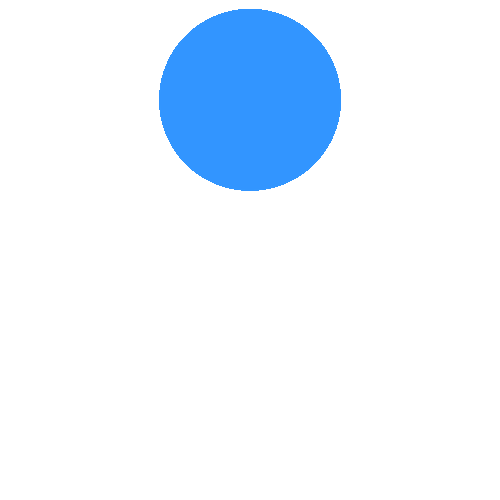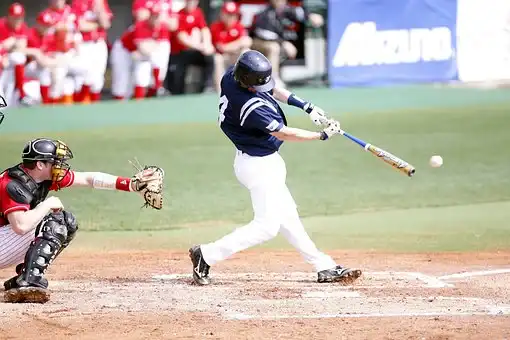Momentum is a physical state of an object when it is in motion. A moving car cannot be stopped immediately after applying the break. It stops after moving a little distance because of its momentum. The position and momentum of a mechanical system describe the entire dynamics of the system. Therefore, the study of momentum is very important in classical dynamics. In this article, we’re going to discuss the basic concepts of change in Momentum and Impulse and their formula.
Contents of this article:
- What is Momentum?
- Formula of Change in Momentum
- What is Impulse?
- Relation between Momentum and Impulse
- Examples of Change in Momentum
What is Momentum?
Momentum is a physical quantity that arises in a moving body and indicates how much external force is required to stop its motion. It is measured by the product between the mass and velocity of the body. Momentum has both direction and magnitude. Hence it is a vector quantity. It has the same direction as the velocity.
Momentum (P) = Mass (m) × Velocity (v)
Units and Dimension of Momentum
The SI unit of momentum is Kg.m.s-1 or N.s and the CGS unit is gram.cm.s-1 or dyne.s. The dimensional formula of Momentum is equal to the multiplication between the dimensions of mass and velocity which is [MLT-1].
Formula of Change in Momentum
If the initial and final velocities of an object of mass m are u and v respectively, then its initial momentum P1 = mu and the final momentum is P2 = mv. Then,
The formula for change in momentum of the object is ∆P = (mv – mu) = m(v – u)…………(1)
According to Newton’s second law of motion, the cause of change in momentum of a body is a net force applied to the body. It tells us that the rate of change in momentum is equal to the net force. Thus we can have another formula for Momentum change –
Change in Momentum (P) = Net Force (F) × time (t)……………..(2)
Causes of change in Momentum in a body
The momentum of a body changes due to the following reasons –
- A net force produces an acceleration in a body that changes the velocity and hence the Momentum.
- Momentum can also change without any change in mass and velocity.
- If we throw a ball on a wall and the ball comes back with the same velocity, its momentum changes.
- In this case, its initial momentum is mu and the final momentum is (– mu).
- Hence the change in momentum is ∆P = mu – (- mu) = 2mu.
- The collision between objects causes a change in momentum of the objects.
- According to Quantum mechanics, a massless particle that is in motion can also have momentum.
- Photons have momentum in spite of having zero rest mass.
- Its momentum changes due to the change in its frequency or wavelength.
Examples of Change in Momentum

The momentum changes in all accelerated bodies. Here is a list of examples of Change in Momentum –
- When a running car applies breaks, the momentum of the car changes (decreases in this case).
- Kicking a football changes the momentum of the football.
- When an athlete starts running, his/her momentum changes.
- A bouncing ball changes its momentum after every bounce and at every maximum height.
What is Impulse?
If a large amount of force acts on an object for a small time, then the product between the force and the time of act is known as the impulse. If a large force F acts on an object for a small time t then
The formula of Impulse acting on the object is, I = F × t………….(3)
Remember:
- Force should be of a very high amount which is called an Impulsive force.
- The time or duration of acting the force should be very small.
Examples of Impulse in real life

All the examples of momentum change due to an applied force are examples of Impulse. Here are some examples –
- When a hammer hits on a pin or nail, it exerts an Impulse on the pin.
- During hitting a baseball.
- Kicking a Football.
- Collison between billiards balls.
Relation between Momentum and Impulse
The Impulse is dimensionally equal to the change in momentum. Actually, Impulse is the cause of change in momentum. From Newton’s 2nd law of motion,
Net force, \small\color{Blue} F = \frac{∆P}{∆t}
or, \small\color{Blue} F . ∆t = ∆P
Thus, Impulse = Change in Momentum.
Let’s understand things with an example problem!
Example Problems on Impulse and Momentum

Question:
A baseball of mass 150 grams is thrown toward a batter with a velocity 25 m/s and the batter hits the baseball toward the thrower with the same velocity. Find the impulse on the baseball. If the batter hits the baseball for 0.001 seconds, then find the force applied to the baseball by the batter.
Answer:
The mass of the baseball, m = 150 grams = 0.15 kg. The initial velocity u = 25 m/s and final velocity is v = – u = (- 25 m/s). Duration of contact, t = 0.001 seconds.
i) The Impulse on the baseball, I = Change in Momentum
or, Impulse = mu – (- mu) = 2mu
or, Impulse = (2 × 0.15 × 25)
Thus the Impulse = 7.5 Kg.m/s or N.s ….(Answer)
ii) The force applied on the baseball by the batter is, \small F = \frac{∆P}{∆t}
or, Force = \small \frac{2mu}{∆t}
or, Force = \small \frac{7.5}{0.001}
Thus the force on the baseball = 7500 Newtons……(Answer)
This is all from this article on change in Momentum and Impulse and their formula. You can ask me in the comment section if you have any doubts about this topic.
Thank you!
Suggested Articles:
- Newton’s Second Law of Motion
- Torque and Rotational Motion
- Equations of Force in Physics
- Contact Forces
2 thoughts on “Formula of Change in Momentum and Impulse”
Comments are closed.